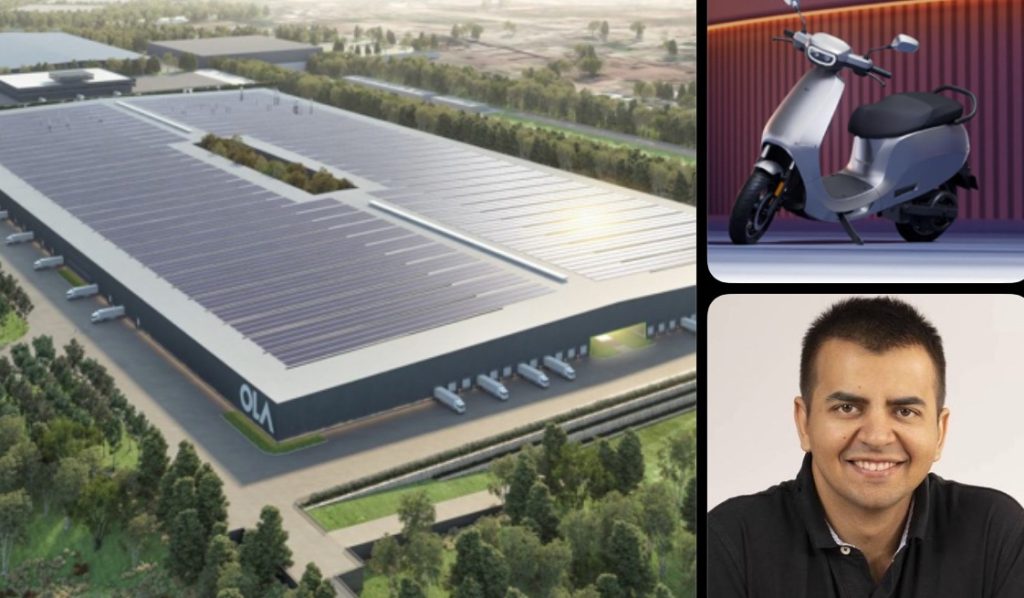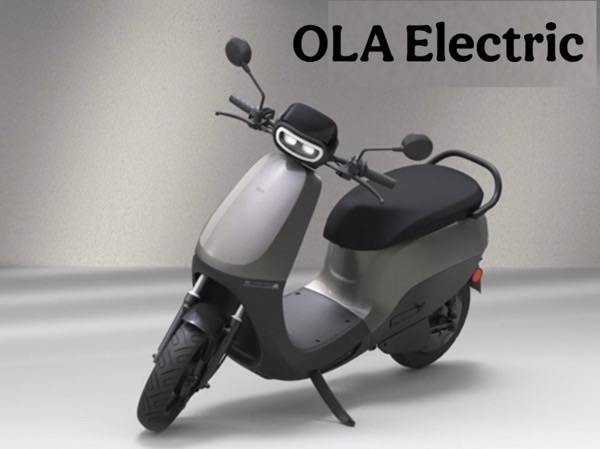The Birth of a Vision
In 2017, Bhavish Aggarwal — already known for building Ola Cabs into one of India’s biggest mobility platforms — looked at the country’s roads and saw a pattern that was about to become unsustainable: traffic, pollution, fuel dependency, and the rising cost of ownership for everyday Indians.
His question was simple but profound — what if the next decade of mobility in India wasn’t about cars at all, but about clean, smart, electric two-wheelers that could redefine how India moves?

That question gave birth to Ola Electric, a company not just aiming to make electric scooters, but to rewrite the entire idea of personal transport in the world’s most populated democracy.
For Bhavish, it was never about making another scooter — it was about creating a movement, one that would give India energy independence, sustainable cities, and global leadership in clean mobility.
A Factory Called the Future
When Ola Electric announced its Futurefactory in Krishnagiri, Tamil Nadu, the world took notice.
Spread over 500 acres, this facility wasn’t just the world’s largest two-wheeler manufacturing plant — it was designed to be carbon negative, run predominantly by women, and built with automation and scale that rival the best in the world.
With the capacity to produce 10 million electric two-wheelers a year, the Futurefactory symbolized something India had long dreamed of — not just assembling global technology, but creating it.
At full scale, the facility plans to employ over 10,000 women, making it one of the most inclusive industrial initiatives in modern India. Every scooter that rolls off its line carries that deeper story — one of empowerment, sustainability, and audacity.
The Early Miles: Challenges and Course Corrections
Ola Electric’s journey has been as real as it is inspiring.
Its early years saw immense excitement — record-breaking bookings for the Ola S1 and S1 Pro electric scooters. But like any pioneer rewriting the rules, it faced teething troubles: supply-chain hurdles, battery quality issues, and customer service challenges.
Critics doubted whether India was ready for mass-scale electric adoption. Yet, Bhavish and his team didn’t step back — they doubled down.
They improved battery management systems, expanded charging networks, introduced software updates remotely, and continuously refined their product lineup.
This ability to iterate fast and improve faster is what makes Ola Electric stand out.
In a space where most would have slowed down, Ola sped up — turning feedback into evolution.
By 2024, Ola Electric had crossed a historic milestone — over one million EVs produced, a record that placed it at the center of India’s green mobility transformation.
Beyond Scooters: A Complete Ecosystem
What makes Ola Electric’s story more than a manufacturing success is its ecosystem-first approach.
Bhavish realized early that an EV revolution couldn’t survive on vehicles alone. It needed three key pillars:
Battery innovation Charging infrastructure Smart software integration
To solve the first, Ola began investing heavily in battery cell manufacturing. Its new Gigafactory in Krishnagiri is designed to produce advanced lithium-ion cells — the beating heart of EVs. This vertical integration reduces cost, increases reliability, and ensures control over one of the most critical parts of the EV supply chain.
To address range anxiety, Ola developed a nationwide charging network — Hypercharge. The company’s goal: install over 100,000 fast chargers across 400 cities, creating India’s largest EV charging ecosystem.

And finally, through its proprietary operating system, MoveOS, Ola built an intelligent digital interface that powers not just navigation, but diagnostics, performance tuning, and predictive maintenance — turning each scooter into a smart mobility device.
In short, Ola Electric isn’t just selling products. It’s building India’s electric mobility infrastructure from scratch.
The Vision Expands: From Two Wheels to Four
Once Ola’s foundation in two-wheelers was secure, the company began hinting at its next big leap — electric motorcycles and electric cars.
In 2024, Ola unveiled concepts for a lineup of electric motorbikes — from the Cruiser to the Adventure to the Roadster — signaling its intent to dominate every segment of the Indian EV market.
Next came a teaser of Ola’s first electric car, a sleek, performance-focused model that promised to rival global EV standards.
With plans to launch it by 2026, Ola aims to position India firmly on the global EV car map — something few would have imagined a decade ago.
This expansion isn’t just about product diversification. It’s about a deeper belief — that India can build the future it once imported.
A Leader Thinking Long-Term
Bhavish Aggarwal isn’t just running a company — he’s nurturing a mindset shift.
He’s often said, “India must not miss the EV revolution like it missed the semiconductor revolution.”
That conviction drives Ola’s long-term plans: to make India a global hub for EV manufacturing, battery innovation, and green energy adoption.
Ola Electric’s IPO plans, its investments in R&D, and its collaboration with global energy leaders all signal the same intent — to ensure India leads, not follows, in the next wave of industrial transformation.
Empowering a New Generation
One of the most powerful aspects of Ola Electric’s story is how it connects with young India.
For students, it’s a story of science and sustainability.
For engineers, it’s a story of innovation and scale.
For entrepreneurs, it’s a story of courage and creation.
And for families across the country, it’s a story of affordability and aspiration.
Electric two-wheelers like the Ola S1 have made it possible for the average Indian household to save on fuel, reduce emissions, and experience cutting-edge technology — all while supporting an Indian-made product.
It’s mobility meeting mission.
A Future Charged with Possibility
Looking ahead, Ola Electric envisions an India where every ride is electric, every charge is clean, and every journey contributes to a more sustainable tomorrow.
Its next milestones include:
Achieving net zero emissions across its operations. Scaling production to meet export demand across Asia, Europe, and Latin America. Creating millions of indirect jobs through supply chains, charging networks, and local dealerships. Leading the AI-driven EV innovation frontier, where vehicles will not only move intelligently but communicate seamlessly.
If the last decade was about connectivity, the next will be about conscious mobility — and Ola Electric intends to be its architect.
The Real Legacy
Every era has its icons of change — companies that don’t just chase profit, but shape possibility. For India’s green mobility era, Ola Electric is that icon.
Its journey mirrors India’s own — ambitious, disruptive, and driven by purpose.
From a young entrepreneur’s idea to a national movement on two wheels, Ola Electric’s story is proof that when innovation meets intention, revolutions don’t need to roar — they can arrive quietly, one electric mile at a time.




